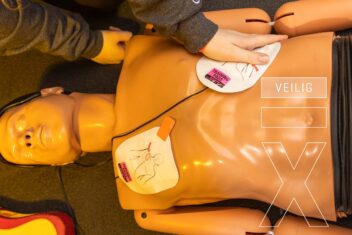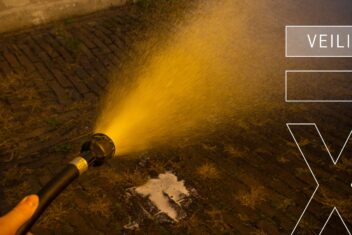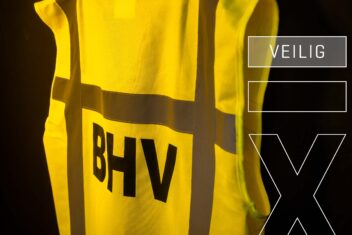What does a first responder training course entail?

Almost everyone knows what first aid (‘ehbo’) stands for: First Aid for Accidents. The abbreviation, however, is less well known, but stands for company first aid. An in-house emergency response worker (first responder) is an ordinary employee who can provide first aid, but who also knows how to extinguish a fire, for example, who alerts employees in case of emergencies and who is the point of contact for professional emergency services. You learn all this during a first responder training course, after which you can be called a certified first responder. Here, we tell you about the different components and content of the in-house emergency response course.
Communicating during an emergency
As a first responder, you take immediate action in case of incidents or emergencies. This involves alerting employees and cooperating with the emergency organisations you inform of the accident (the fire brigade, police or ambulance). The first responder training course teaches you how to handle this communication.
Fighting a starting fire
Emergencies can be various events, from earthquakes and floods to environmental disasters and fires. Fire is one of the most common incidents in this list. In first responder training course, you will therefore learn how to limit and fight a starting fire. You will learn which extinguishing agent to use to extinguish a fire (because there are different types of extinguishers and different types of fires) and will practice using a fire extinguisher.
Clearing premises quickly and safely
When an incident occurs, a building may need to be evacuated. In the first responder training course, you will learn how to evacuate a building, to get everyone to safety. For example, you will need to ensure that all exits are clear for emergency crews, you will need to check toilets, among other things, and you will have everyone gathered at a meeting point. You will learn, in short, what to look out for during an evacuation.
Providing first aid
As a first responder, after attending a course you will know how to perform life-saving acts (first aid), which includes CPR and the use of the AED.
Emergency response = theory x practice
The first responder training course consists of theory and practice
In a first responder training course, theory and practical examples are alternated with practical exercises and the course concludes with a theoretical exam. Since, as a first responder, you need to have many practical skills, it is important to keep them up to date. To ensure that this accumulated knowledge is indeed maintained, the certificate is valid for one year. By having the in-house first responders obtain the refresher certificate annually, the employer complies with the basic obligation under the Working Conditions Act.
Would you like to follow a first responder training course at FeniksGroup, or first some more information? Feel free to contact us. We will gladly help you.
July 28, 2021
Sharing is allowed, gladly even!

Would you like more information about our training courses, or do you have another question?
Fill in the form, we will contact you asap!
You hereby grant permission to FeniksGroup to contact you. Your contact details will not be shared with third parties.
Want to receive the latest safety insights in your mailbox?
Sign up for free!
No spam. You can unsubscribe at any time.


